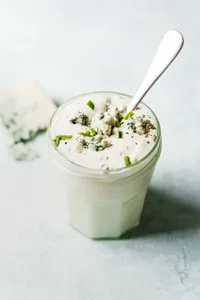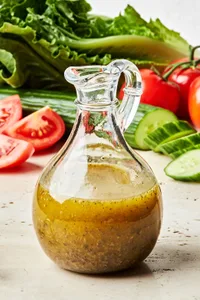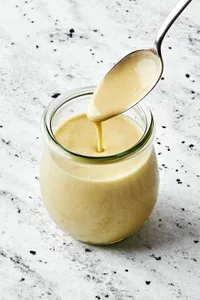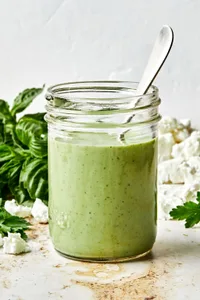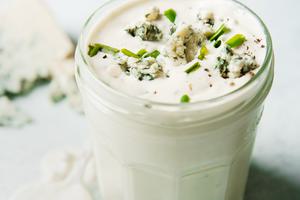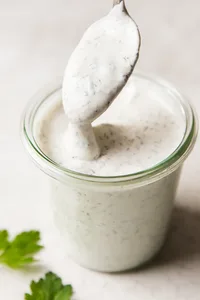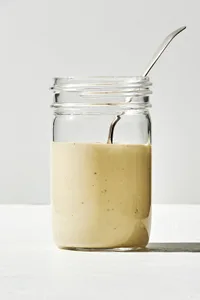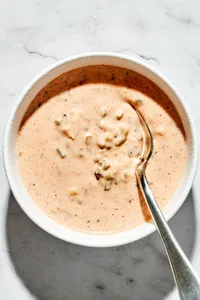Funky and tangy, blue cheese can be an acquired taste. But once acquired, for many of us, the taste of blue cheese is something we can’t get enough of! We put it on burgers, crumble it over salads and (best of all) make this blue cheese dressing recipe with it! For more delicious recipes that’ll prove that homemade salad dressings rule, try our Caesar Dressing or our classic Ranch Dressing.
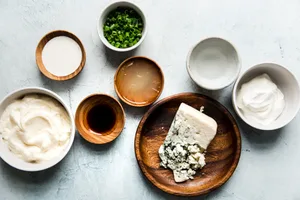
Blue Cheese Dressing Ingredients
Once you’ve made homemade blue cheese dressing yourself at home, there’s no going back. Our classic blue cheese dressing recipe will yield a dressing and dip that is immensely more flavorful than store bought, and rivals anything you’d taste in a restaurant. All you do is mix together:
Blue cheese. Our easy blue cheese dressing recipe is a little chunky—we like to have tangy, creamy pieces of blue cheese in each bite—so look for a relatively hard blue cheese that will crumble easily. Roquefort, gorgonzola and stilton are three of the most famous blue cheeses, but any blue cheese you like that’s nicely crumbly will be fine.
Mayonnaise. Regular, real mayo is best here — now is not the time to count calories.
Sour cream. Full fat, please!
Worcestershire sauce.
Vinegar. A little extra zing, to balance out all the fat.
Fresh lemon juice. Ok, a little more acid to help keep all this cheesy goodness delicious and not overwhelming.
Fresh chives. The herbal lift that a rich dressing like this needs.
Heavy cream. Without the cream, this dressing is a little too thick to use.
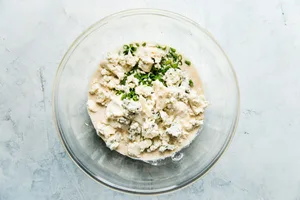
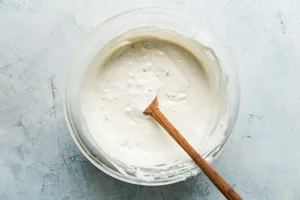
How To Use Homemade Blue Cheese Dressing
Serve the dressing with a big platter of veggies as an appetizer everyone will adore.
Iceberg Wedge Salads are a classic way to use blue cheese dressing, and will wow your friends, everytime.
Homemade Buffalo wings deserve homemade blue cheese dip on the side (pssst, blue cheese dip is just blue cheese dressing).
And maybe it’s not exactly traditional, but blue cheese dressing makes us think of steak houses, and so we love to use it on this Grilled Steak Salad. Think major indulgence, but super low-carb!
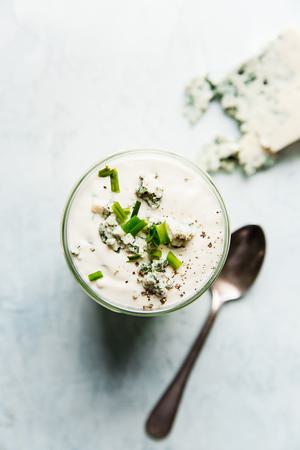
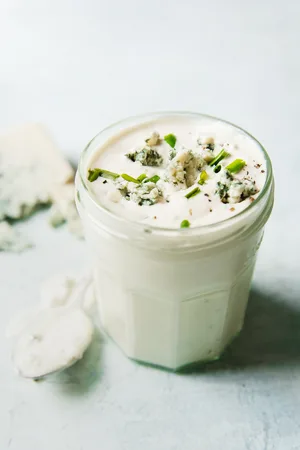
The Best Homemade Salad Dressing Recipes
Double Dip!
For more recipe inspiration, follow us on Facebook, Instagram, TikTok and Pinterest or order our cookbook. We love when you share your meals. Tag us on Instagram using #themodernproper. Happy cooking!
